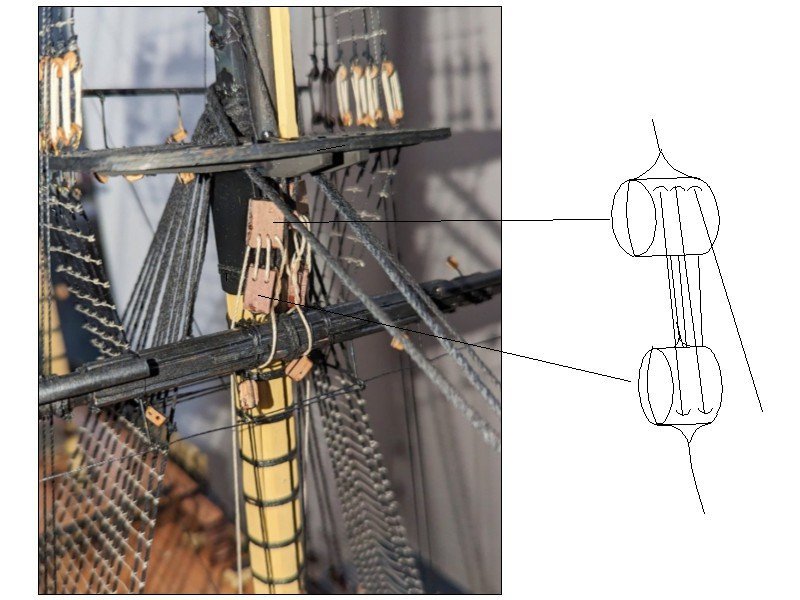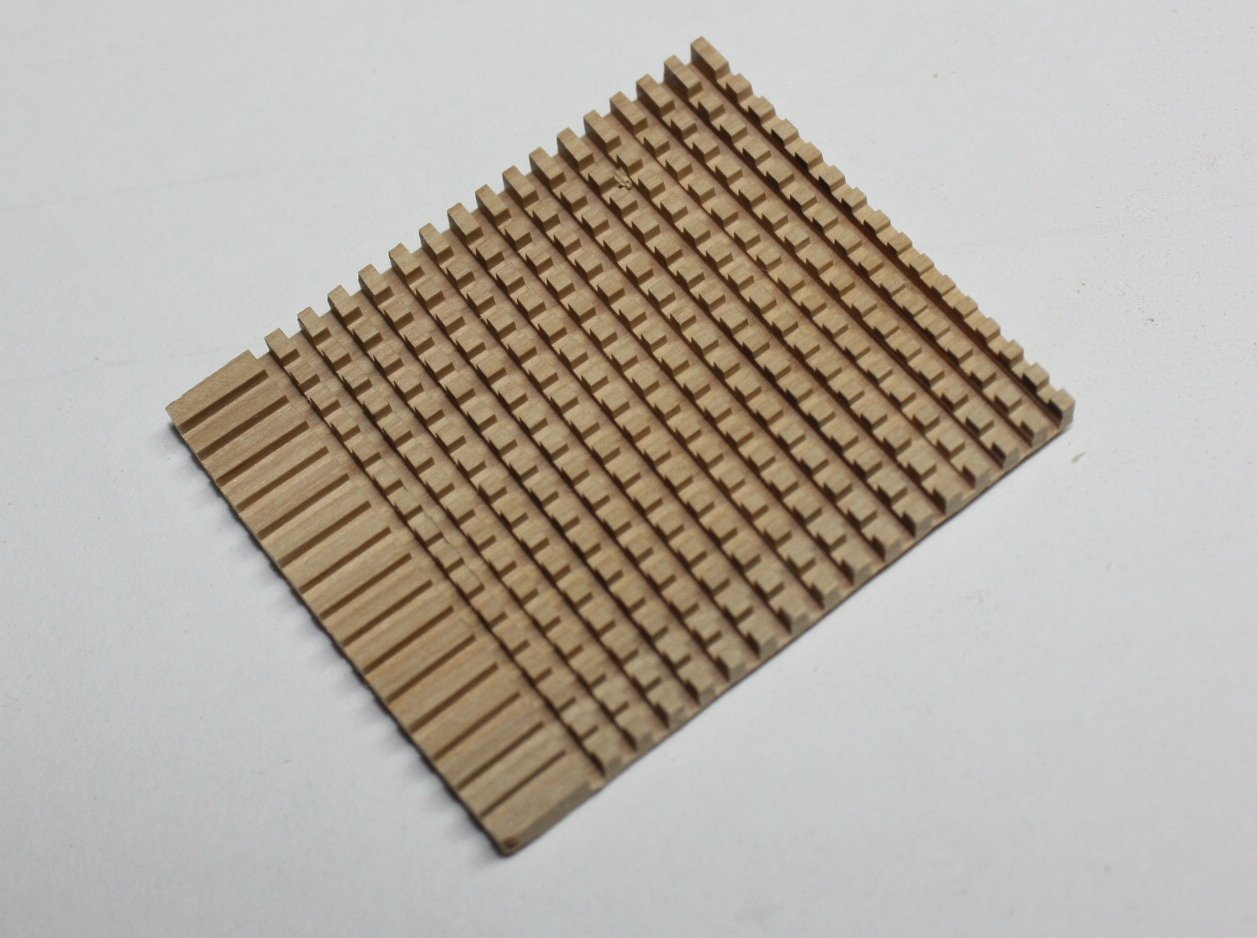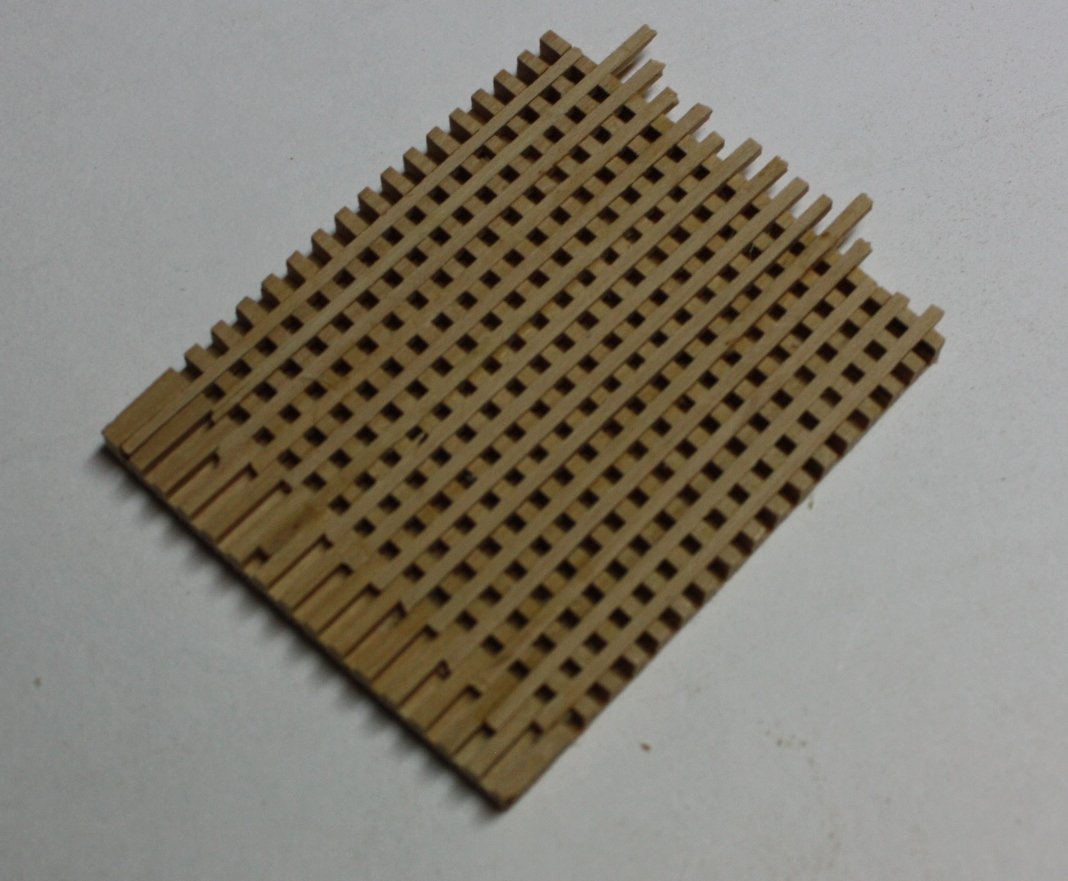-
Posts
8,149 -
Joined
-
Last visited
Content Type
Profiles
Forums
Gallery
Events
Posts posted by allanyed
-
-
Go to the McMaster site or similar suppliers where you can find brass tubing. You can chuck a small piece in a drill and cut a grooves with a needle file, then cut off each piece with a fine tooth stiff back saw like those from Xacto and others. https://www.mcmaster.com/products/tubing/?s=brass-tubing%2Fbrass-tubing Click on the top left and a page will come up with various sizes. Those that come up on the right look like they may work for you. A bit of work, but not difficult.
Allan
-
11 hours ago, mtaylor said:
For the French? It's pretty scattered. There might be a book at ANCRE otherwise it's sifting through monographs. Not being a French speaker, I have no idea what's in any archives in France.
Hi Mark,
I am taking your advice and sending a note to Ancre asking if they can provide sources of contemporary based information. I do not want to have to buy sets of Boudriot books though to get this information. I was planning to do some research at the Museé National de la Marine in Paris last week, but found out some weeks back that it is closed for renovation until late this year so that opportunity was nixed. The plus side is that we still had a great visit in Paris and Normandy AND now I have an excuse to get back to France sooner than later.
Allan
- thibaultron, mtaylor and Canute
-
 3
3
-
Looking great overall! I do have a question though, hope you don't mind Why are many blocks upside down? Below is a sketch with the blocks as they are usually rigged so the line runs over the sheaves inside the blocks..
Allan

-
8 hours ago, uss frolick said:
The French also had an unusual way of rigging
Thanks again
Several of us are working on a project that so far has about 130 different cannon from the mid 17th century through the early 19th century and appropriate carriage designs where we could find them. The idea of the project is to end up with 2D and 3D plans for the barrels so they can be turned, cast, or 3D printed in any scale. These are all based on contemporary sources. They are mostly British with some Spanish, but we have found contemporary information for only a few French pieces. Can you share your sources as we would like to continue our research in order to add more French to the mix to give members as many choices as possible for accurately produced pieces.
Allan
- thibaultron, mtaylor and Canute
-
 3
3
-
Thanks Mr. Frolick, this was a new piece of information for me and I appreciate it. Do you have any drawings and other information based on contemporary sources for French carriages as well as barrels that you can share?
THANKS AGAIN!!
Allan
- mtaylor, GrandpaPhil, thibaultron and 2 others
-
 5
5
-
1 hour ago, Gregory said:
Visually on a model, a little smaller than exact scale tends to look better, as well as consistent proportions. Block size, in proportion to the line size is also important.
Take Gregory's advice, err on the size of too small versus too large. Sorry I did not post the link for which I have been animadverted but the NRG site was shut down for a while and I was worried posting the link might cause confusion.
- Stephane Hubert, Gregory and mtaylor
-
 3
3
-
Keep in mind that the cannon and carriages changed over the years. Blomefields in 1800 looked nothing like Browne pattern guns in the 1600's and there were many in between just for the RN. Carriages had four rolling trucks at times and only two at other times to name just one of many changes with the carriages. If you pin down a year and nationality you will find it easier to move forward. There were differences for Spanish, French, and Dutch to name a few. You can have any barrel 3Dprinted in many sizes and scales size with 3D printers so your choices are not limited.
Looking at Geronimo's model, the rigging is different than anything I had seen before with the breech rope piercing the sides of the carriage. Was this common to a specific nation/era/size?
Allan
- modeller_masa, Canute, thibaultron and 1 other
-
 3
3
-
 1
1
-
WELCOME TO MSW Stephane!
Without knowing which lines you are referring to there is no way to know if the rope sizes you give are correct or not. While San Francisco is a different nationality and supposedly a galleon from the 16th century there is likely very little, if any, contemporary information on rigging but lacking such contemporary information, there is a spread sheet here at MSW that will give you every line size as well as the masts and spars for English ships from about 1650. I suspect rigging line sizes will be similar for your Spanish ship if not exact. Hopefully some member has contemporary information on rigging for the 16th century. You will need some basic information on the length and breadth of the full size San Francisco or at least something close. Go to the articles data base here at MSW and hopefully the spread sheet in the rigging section from Danny Vadas will give you something close to the correct sizes. Keep in mind a lot of rigging was given in circumference, not diameter. I tried to post the link here, but having trouble getting on the NRG website where this is stored.
Allan
-
4 hours ago, Chuck said:
The only reason why builders are unaware of this detail is because few if any kit designers have bothered to include it or explain it in their instructions for the last 50 years. Maybe they didnt know either.
Well thought out comments throughout Chuck, thank you very much for posting this.
Allan
-
4 hours ago, Roger Pellett said:
Chapelle’s American Fishing Schooners.
I second this recommendation! You will find a lot of great information on how things were actually done which, based on the photo in post #4, may differ from the conventions used in the kit at times. Your call on how you move forward, but at least you may have choices in some cases. There are some great photos and drawings of Ernestina that might help as well. These can be found with a quick search in the Library of Congress Website. https://www.loc.gov/resource/hhh.ma1719.sheet?st=gallery
Allan
-
5 hours ago, AON said:
What I've learned is I best get some photos as proof of what I have accumulated for any insurance claim.
This is great advice, even for books When I look at the value of some of my own books it is substantial so photos will be taken and saved as soon as we get home from vacation.
Allan
-
-
If it doesn't exist, I'll just have to make it myself. Doesn't mean I'm not gonna complain about it.
Daniel
You said it, not me. Maybe time to have a go at a scratch build?? I would be happy to send you a full set of drawings for POF or POB for a fifty gun British ship of 1695. in whatever scale you want. I have an appropriate contemporary contract and full set of scantlings as well. PM me with your contact information if you are interested.
Two of the 20+ pages are below, including some of the bulkheads for a POB build, to give you an idea of the plans.
Allan
-
Hi Gary,
I feel awful about what has happened. I found the Portia Takakjian list that you posted back in the day but not your own. Was it up before the big crash 10 years ago?
Allan
-
1 hour ago, Dr PR said:
In earlier times the ship's Captain could have anything changed to suit his preferences.
Hi Philip
Regarding English naval ships of war, my understanding is that the rigging often varied from ship to ship and one reason so little contemporary information on rigging belaying points is available. But when it comes to things such as carriages or, as you mention, anything the captain wanted to change, this is an interesting point. There has been mention many times of variations of the captains' personal spaces and even types of boats taken aboard. Reading about other things such as carriages and who paid for these changes, based on contemporary sources, would be interesting so I hope some more examples are brought up from the time period between 1650 and 1825 for English, French, and Spanish warships.
Allan
- Keith Black, thibaultron and mtaylor
-
 3
3
-
-
-
2 hours ago, Keith Black said:
it looks like a Dahlgren. Dahlgren cannon
Thanks Keith, I agree, just could not remember the name when looking for these after Pat's post. In any case those came into use about 1855 and only in the US so not necessarily applicable to 18 to early 19th century European carriages.
Allan
.
- thibaultron, mtaylor, Keith Black and 1 other
-
 4
4
-
20 hours ago, javajohn said:
So, I'm going to remake them using your techniques.
Wish I could take credit for developing this method but I learned it by experimenting with the method Frolick details in his book The Art of Ship Modeling. This is discussed elsewhere here at MSW and some tips on avoiding problems of wandering cuts is covered. Go to https://modelshipworld.com/topic/28125-17th-century-british-galley-friggot-by-allanyed-164/page/2/#comment-826241 and see posts #52 and #53 about yawing issues.
Allan
-
On 5/17/2023 at 9:32 PM, Dr PR said:
Carefully hand crafted individually produced (none of those mass produced parts) wooden mast hoops made in the USA!
Hi Phillip,
The rings look super!!! Maybe I am missing something but what is your point of having been made in the United States? It looks like the methods you show will work for members in Australia, China, England or any country for that matter.
Allan
-
8 hours ago, Bob Cleek said:
The answer is "It depended." However, what we do know is that the U.S. Navy maintains a pristine 50,000 acre natural forest of white oak trees solely for the purpose of repairing U.S.S. Constitution! "
I did not know this and as the government is known for always being efficient, they must have done lengthy studies with shipwrights and forest services and calculated 50,000 acres is what was needed. to maintain one ship that mostly sits in port. If the government says 50,000 acres is needed it must be true correct. Now if we dig a little more, and maybe this has changed in the past few years, but the Navy maintains (pays for) the forest but it is privately owned by Brett Franklln of TriState Lumber LLC. I wonder how much he is paid for allowing use of 50,000 acres when maybe far less is actually needed. Sorry for being skeptical, but ...........
Allan
- Chuck Seiler and mtaylor
-
 2
2
-
20 hours ago, bwross11 said:
Having seen some of the old tall ships I'll bet they chopped down entire forests for some of them
Hi Bruce
I did a few minutes of research and found that there are a number of recommendations for 100 to 400 oak trees per acre. Typical largest rate ships required upwards of 2000 trees. So from 5 to 20 acres for the largest ships would be needed, not much of a forest. 😀
Allan
-
For the future, it is easier to make these in part as they were made full size. Using a method the same or similar to that described by Bernard Frolich in The Art of Ship Modeling works very nicely if you have a saw like your Byrnes saw. This is described in earlier posts and the below may help. The openings varied but were usually more than 2" square and less than 3" square. The battens and ledges would be the same widths as the opening. Keep in mind that the battens run fore and aft and the ledges athwartships. The battens are thinner than the ledges.


The coamings and head ledges are a different story. The head ledges often/usually had a camber as did the gratings themselves. The corners were usually rounded from the top to what would be the top level of the deck planks.
-



painting bulwarks red, why?
in Building, Framing, Planking and plating a ships hull and deck
Posted · Edited by allanyed
The following is more likely the reason. Deck furniture, bulwarks, etc, were red ochre. This was discussed in an earlier post here at MSW in 2021 and it was mentioned that this was for protection from the weather and ochre (earth) colors were inexpensive. In addition, after long sea voyages and during repairs it was also refreshed. The idea that it would hide blood was coincidental, not the reason it was most often red. There are a number of contemporary models where much of the inboard works were painted black. I have no idea if this was original or done at some later time. The Navy Board stated 18 July 1715 that painting (presumably outboard and inboard) was "not to refresh oftener than once a year or two and the inboard works that are from the weather." There is no mention of a particular color or hiding blood. The actual usefulness in protecting the wood from rot and the cost would probably be a bigger concern to the navy than the mental state of the sailors in the age of sail. If you are next to a man that has had some part of his body ripped off, I doubt hiding the blood on a bulwark would make it any easier to avoid fear, panic or the onset PTSD.
Allan